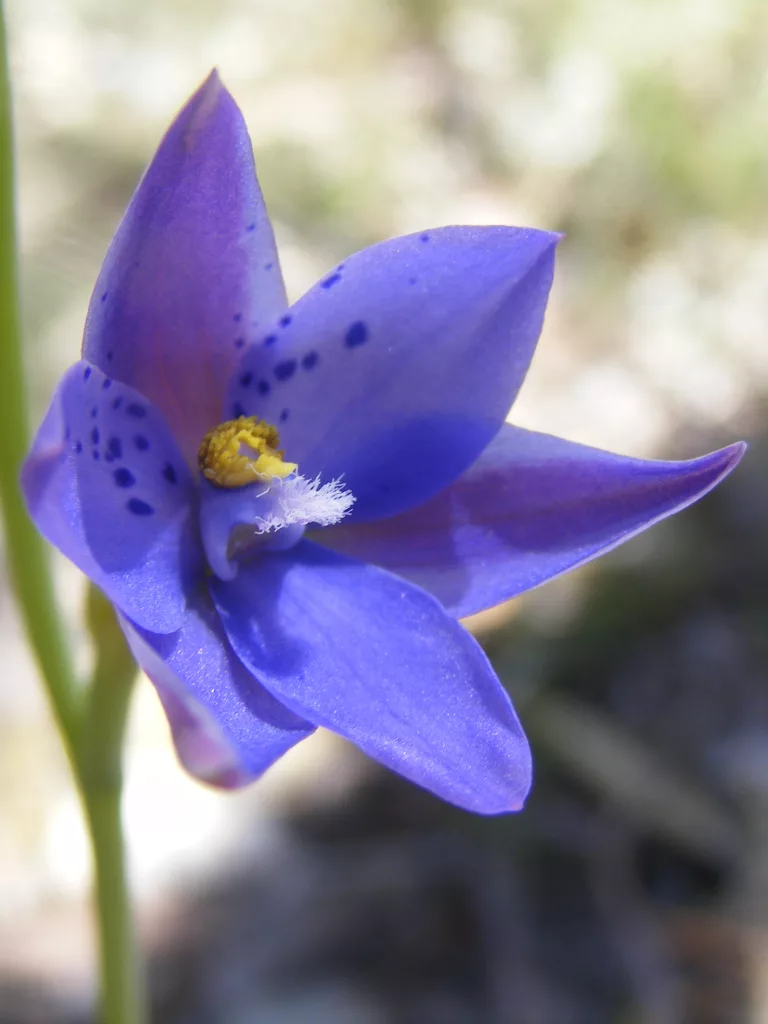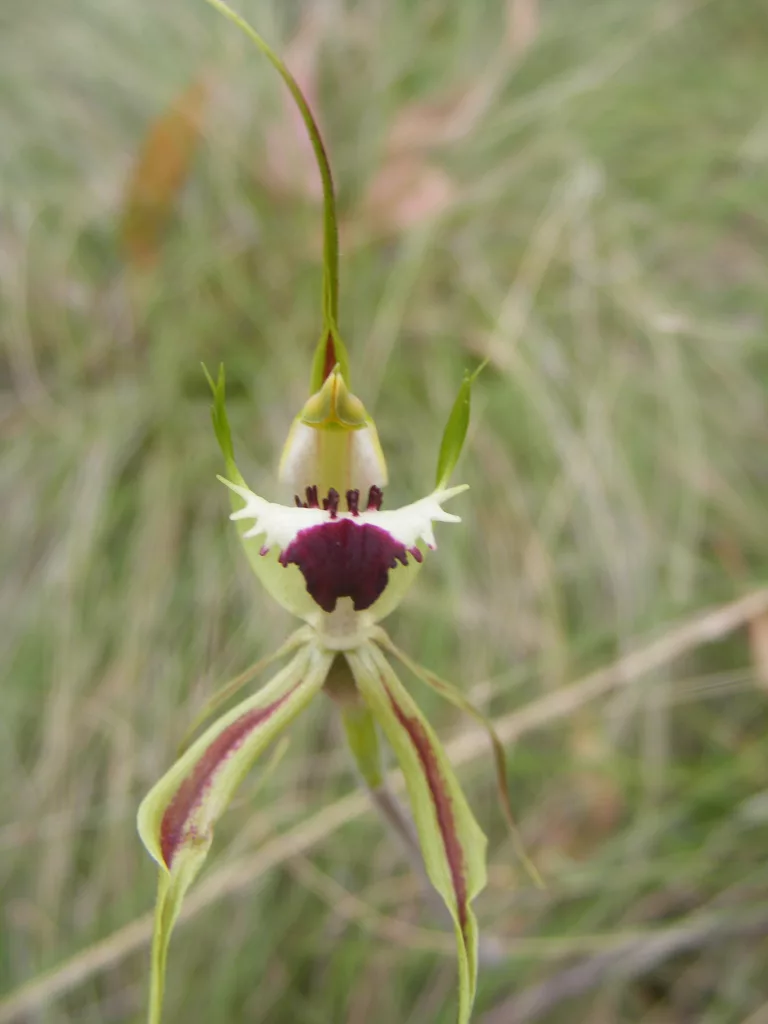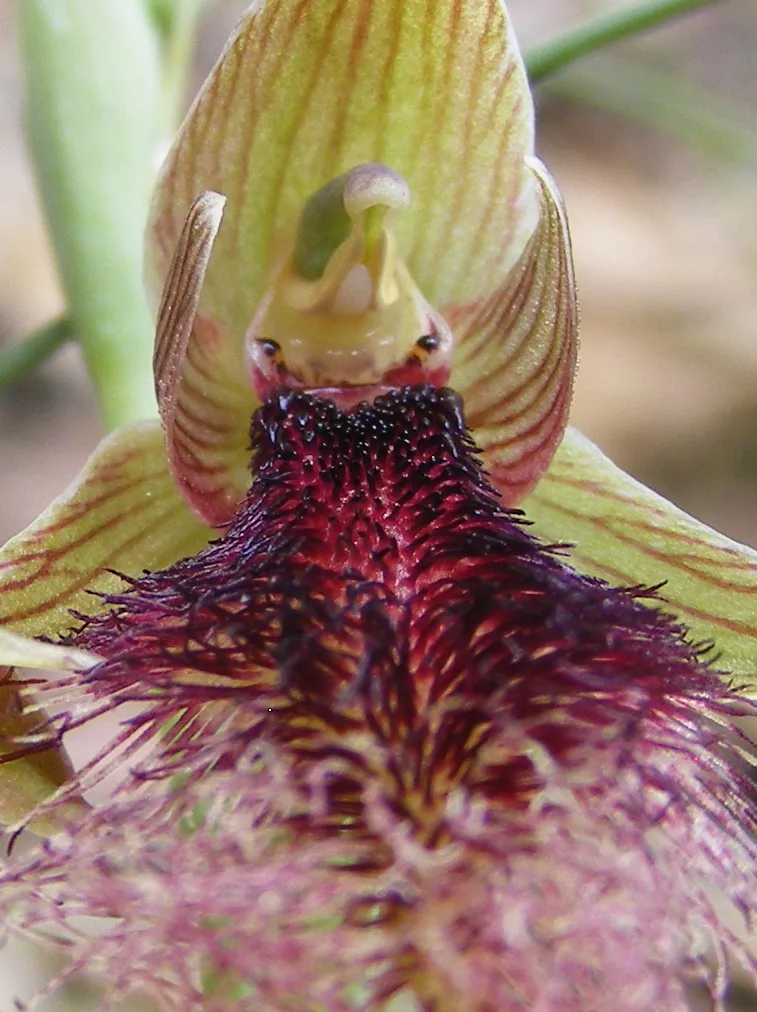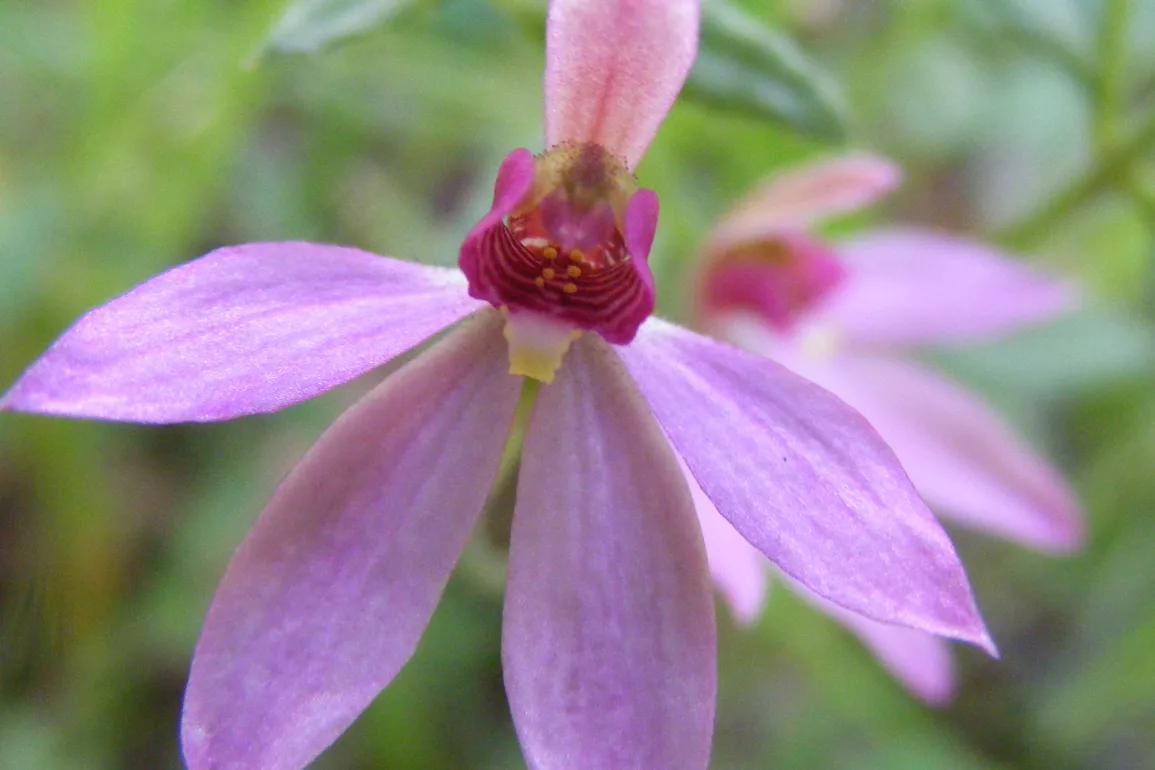Lydia Heap, of Smiths Gully, knows the orchids of Nillumbik and wants to share her knowledge. An accomplished botanist, she self-published “Orchids of Nillumbik” in 2019, with multiple colour photos of each of 58 species found in the Shire.
Orchids bloom in every month in Nillumbik. Happily, a quick glance through her book makes knowing what might be blooming each month readily apparent with a simple and effective graphic, a very field-friendly feature. In fact, there is very little text aside from the short introduction. Most orchids are depicted on a single page with three large and helpful photographs, the common name, scientific name, a synonym if scientific name is in the process of being revised, the graphic of blooming months, flower size and plant height. Simple and sweet.

About her book Lydia says…
Orchids are found throughout the Shire. About 140 orchid species have been documented in the shire. Some species are not found anywhere else in the world.
The orchid family contains the 7th largest number of flowering plants in the world – there are about 28,000 orchid species in the world. Australia has documented between 1200 and 1400 species.
Nillumbik is rich in orchid species because of the shire’s extensive remnant bushland. Many species are common and often found in Nillumbik’s bushland reserves. The most numerous are Greenhoods, while a few quite rare species are listed as threatened, endangered, or in danger of extinction.
Orchids range in size from several millimeters to 100 centimeters high and are generally small (10 to 15 cm high). Often, camouflage makes them difficult to spot in the bush. The search for orchids will sharpen one’s visual acuity.
To look for orchids in the bush, Lydia says …
The best practice is to stay on trails when bushwalking to avoid trampling plants including orchids. 56 of the 58 species in the book can be seen in public reserves without leaving the path. Council and Parks Victoria staff members who are involved in re-establishing orchids place some next to enclosure fences to enable the public to see them easily.
Orchids have complex biological features and life cycles. Each species of orchid has a symbiotic relationship with a separate species of fungi in the soil. Because of this symbiotic relationship orchids are very difficult to transplant. Orchids often occur in small patches that are widely scattered in the shire. Different species flower at different times of the year. Some patches of orchids flower annually on a regular basis, while patches of other species are dormant for many years, only flowering irregularly. Many biological and environmental factors affect orchid biology relating to distribution, abundance and flowering time.
Where can you see orchids? There are many reserves and parklands in the shire. Particular favourites are Boomers Reserve and the Panton Hill Bushland reserves located in Panton Hill and Smiths Gully, and the extensive Warrandyte-Kinglake Nature Conservation Reserve.





In Nillumbik, orchid research and conservation is being carried out by Parks Victoria biologists, Shire staff in the biodiversity department, and friends groups linked to Shire reserves. Nillumbik has 150 reserves, many with diverse and healthy orchid populations. For the past 50 years orchids in Victoria have been studied, and several books published. Part of the conservation effort involves replanting non-orchid species that provide food for the insect pollinators of the orchids.
“Orchids of Nillumbik” is self-published through Busybird Publishing in Montmorency and sold by Lydia through her website, or “over the counter” at Smiths Gully General Store. Visit the store, have coffee and buy a copy. Lydia might be there and be free for a brief chat about orchids.
www.LydiaHeap.com





